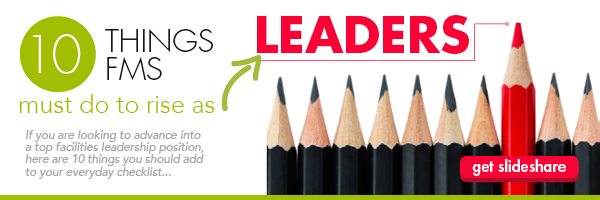New Ideas in Facilities Management to Motivate Your Team


Before you can identify new ideas in facilities management to motivate your team, you have to first ask–what makes you want to do something? Is it going to be enjoyable, maybe fun? Hopefully fun. More than likely, it’s also something of your choosing and involves being able to relax your mind and let go of stress. That sounds like a winning combination for just about anyone. Now, imagine having an equivalent set of parameters within the work environment. How would you respond and, more importantly for FMs, how would your team respond?
Increasingly, companies and organizations are looking for new takes on worker motivation. Not just how to motivate, but how to replenish the worker’s resolve to do a great job. Often, this resolve is within the worker, but they have obstacles that deride focus, create apathy or even dissent. Here are four unique ideas on helping the workforce to help themselves.
Best New Ideas in Facilities Management to Motivate Your Team
- Revive the Worker’s Spirit
- Give Employees Ownership of Their Jobs
- Design Work Schedules with Options for Rest and Downtime
- Break Out of the Ordinary
Revive the Worker’s Spirit
“95% of people (regardless of their walk of life) want to do a good job, feel pride in what they do, have good relationships with their co-workers and feel they are contributing in a meaningful way.”
You know your facilities management team is successful and can get the job done. They work hard and seem to communicate regularly. Still, how do you encourage them to push forward, especially in the face of adversity? And how do you make sure they know you and upper management recognize the work being done.
It is often the underappreciated worker who becomes the biggest burden, as they begin to curtail their workload in response to job disenchantment. Although not always apparent, the workflow clogs, the other team members sense the dissent and communication grinds to a halt, all because team members lost their way. It may sound dramatic, but this scenario is occurring daily.

Give Employees Ownership of Their Jobs
By giving your workforce a say-so in scheduling, job assignments work stations, work procedures and other intangibles; the team will understand how their voice matters. Let them also be a large source of input on what they see on the job every day. They are, after all, the best source for employee data.
This kind of cooperative management is also being used to promote new leadership positions and mentoring for increased best practices. The hierarchy of office politics seems to be flattening to an increasingly level playing field, in which talent and skill are on display more often than seniority. Progressive managerial structuring, as seen in holacracy, tends to focus on the idea of self-governing teams of workers, with no clearly defined “boss” within a group. A chain of command still exists, between hierarchal groups, but in-group management and operations decisions are based on a democratic process, between only that team’s members. There are even some organizations that place individual workers in managerial positions over their original work ideas. Then, employees can develop their potential ventures for the parent company, without the fear of failure and subsequent unemployment.
Design Work Schedules with Options for Rest and Downtime
The afternoon break, siesta, wushui, bhat-ghum, power nap or any other variation has been a widely popular and practiced tradition in numerous countries around the world. In the United States, though, this work practice has been slow to gain traction, although seems to be an idea on the rise in recent years. More and more, the science of naps suggests that the working brain requires a midday respite and productivity levels show greater gains with the naptime included. Even if the workforce is allowed downtime to step away from the job and clear their minds, the option for detaching shows greater health benefits, both mentally and physically.

Break Out of the Ordinary
Sometimes, just adding spontaneity or even planned events, designed to be fun and non-work related, can be just the spark that keeps the home fires burning. In office areas for gaming, theme days, weekly lunch options or other enjoyable distractions can really make a difference in an employee’s outlook.
Here’s a anecdotal observation of my own; not too long ago, my family had the opportunity to slip off for an afternoon matinee. Normally speaking, the theaters are pretty empty in the middle of the day, but as we walked in, there was already a fairly large number of people sitting together, all in typical business attire. As the movie began, the group all totaled took up an entire row and some seats behind. They easily numbered in the upper teens to twenties. By the end of the film, my interest was piqued, once again, and I asked one of the group members about the occasion and she explained that it was a once a month office tradition to go see a mid-day matinee, assuming all work is caught up. It was optional, but they were all motivated to be finished, when movie day rolled around. And, as they left, it was all smiles and laughter.
Motivation can be such a conundrum. Very few professionals want to feel bribed or coerced into doing work or the opposite in which they feel as if they are constantly in a high pressure position, where the only way to get ahead is to be cutthroat. And being told what a great job someone is doing will only go so far. As always, actions speak much louder than words.

Maybe the most important point to make about motivation is to make it specific for your work force, which means getting to know your people on a personal level. Find out what they like and look to tailor the incentive options accordingly. This kind of individual consideration will also be a motivation within itself, as your team really begins to understand your devotion to them. Whatever the choice, never forget that you have people working for and with you. Treat the accordingly.
